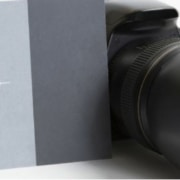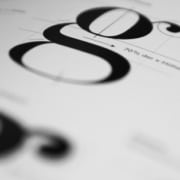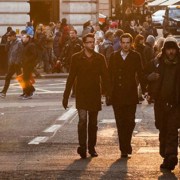Product photography: What’s a good artificial lighting setup?
The importance of product images to eCommerce is nearly impossible to overstate. Online shopping is a visual experience, and your customer will equate the quality of your imagery with the quality of your product. In this guest article, Thomas Kragelund from Pixelz explains how to setup your artificial lighting for shooting beautiful product pictures.
If you have the means, it’s well worth it to rent or buy a simple lighting kit. Natural light can certainly be effective, but you’ll have a lot more control with artificial light. You don’t have to worry about clouds, sunset, or the limited angles of light through a window.
One cost-effective option is a single mono light setup. Here’s what it looks like.
A mono light setup is simple, cost conscious, and effective for product photography.
Place a mono strobe light and umbrella at a 45-degree angle to the product so that the lighting will be soft and even throughout. Keep your camera directly in front of your subject and use a tripod.
Set your light source’s power to about half. For example, if your strobe has 1 to 5 power settings, set it to 3 to provide enough light without overdoing it. You should probably put your camera in manual shooting mode, so you have total control over the aperture, shutter speed, ISO, and other settings. Auto exposure can work, but you don’t want to rely on it if you don’t don’t have to.
A mono strobe light and umbrella provide consistent lighting for product photography.
Manually exposing your image typically requires using your camera’s light meter, which you can find by looking through your viewfinder, and adjusting your settings to make the meter notches reach zero. Adding a strobe changes that, since lighting changes when the flash fires.
Use a handheld light meter. Sync it to the strobe and place it in front of the subject, and you will get accurate readings.
If you don’t have a light meter, start with your shutter speed set at 1/200 or less and your aperture set at f/11 or higher. Take test shots and tweak your camera settings to achieve optimal exposure and focus.
Be sure to allow your sync to recharge between flashes; if you move too quickly between shots your light source may not fire on time. Have patience, and you’ll be rewarded with high quality shots.
You’re on the right track if you have more questions
There’s not a single answer to the question you’re really asking: how do I create perfect product images for my store?
Every business is different, and so too are the solutions. You might want to outsource photography from beginning to end, do it all yourself, or take a blended approach. If you’re here, though, you’re on the right track. Preparation, awareness, and a methodical approach to photography and post-production will serve you well.
Each photoshoot is not just an end in itself, but preparation for your next shoot. Educate, experiment, adjust, and don’t forget to have fun!
ist Business Development Manager Germany bei Sage Pay. Er verfügt über langjährige Erfahrungen in der Finanzbranche mit Schwerpunkt auf den bargeldlosen Zahlungsverkehr. Seine Karriere begann er bei der Eurocard Service GmbH, wo er schnell zum projektverantwortlichen Key Account Manager aufstieg. Als Business Development Manager bei First Data International im Bereich Mobile Solutions entwickelte und vermarktete er neue Zahlungsmethoden. Er machte sich auch einen Namen als freier Berater für Banken, Zahlungsanbieter oder Kartenorganisationen und begleitete Projekte, welche die Zahlungsfunktionalitäten am POS, im E- und M-Commerce unterstützten.






Leave a Reply
Want to join the discussion?Feel free to contribute!